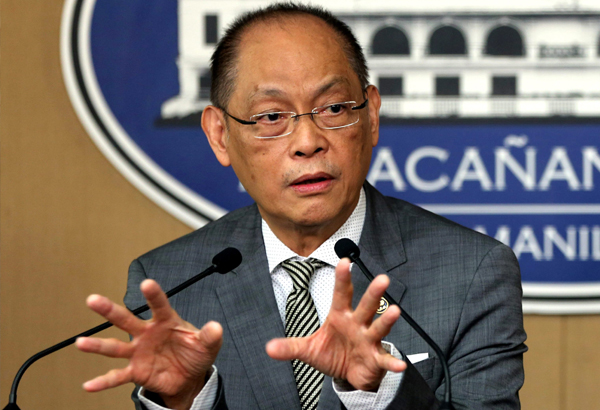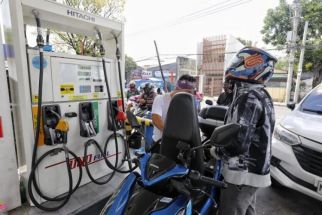YearEnder: Budget reforms reduce underspending in 2017

While it remains to be seen if the budget department can deliver on its promise to eradicate underspending, Diokno said the agency has made significant inroads this year. Krizjohn Rosales, File
MANILA, Philippines — Underspending is an issue that has plagued many past administrations. Upon the start of the Duterte administration, Budget Secretary Benjamin Diokno vowed to address this long-standing problem and improve the government’s spending performance.
While it remains to be seen if the budget department can deliver on its promise to eradicate underspending, Diokno said the agency has made significant inroads this year.
For one, Diokno said underspending – defined as the deviation of actual disbursements from programmed expenditures – has dropped to 5.8 percent in the first three quarters.
“Based on our latest assessment of actual outturns vis-a-vis program levels, underspending was reduced to P123.3 billion or just 5.8 percent of the program for the period January to September 2017,” Diokno said in an email.
“This is a marked improvement from what has been observed over the past three years. Underspending reached P312.6 billion (14.4 percent of the original program) for the same period in 2016, P189.2 billion (12.6 percent) in 2015 and P273.8 billion (15.5 percent) in 2014,” he said.
Diokno said the bulk of the underspending was brought about by savings in interest payments and net lending, among others.
The budget chief said spending this year has been better than expected, considering the high base effects brought about by election-related spending in 2016.
Latest data from the Department of Budget and Management (DBM) showed a 28 percent increase in government spending to P236.9 billion in October from P177 billion in the same month last year.
This brought year-to-date disbursements to P2.24 trillion, up 10 percent from P2.04 trillion in the same period in 2016.
Infrastructure and other capital outlays stood at P442.7 billion as of end-October, 11.8 percent up from last year’s level of P395.8 billion.
Michael Ricafort, head of the Economics and Industry Research Division of the Rizal Commercial Banking Corp. (RCBC), gave the government a “good” rating for ramping up public spending in the first 10 months.
Ricafort cited the government’s efforts to fasttrack the approval of the process, and measures to ensure line agencies speed up the utilization of their budget within one year.
Rajiv Biswas, chief economist for Asia-Pacific at IHS Markit, also lauded the government, saying it “has done a very good job overall in terms of balancing fiscal prudence with the considerable need for higher spending on infrastructure development and social programs.”
Diokno attributed the upswing in public expenditures during the year to the DBM’s intensified monitoring of the performance of line agencies, as well as other policies.
Starting this year, the DBM implemented the one-year validity of appropriations, instead of the customary two years.
“This has put pressure on the implementing agencies to expedite the execution of their projects,” Diokno said, adding it would also prepare the agencies for the transition to cash-based appropriations in 2019.
In addition, Diokno said improvements in budget planning and preparation also ensured only “shovel-ready” projects are included in the General Appropriations Act (GAA), resulting in the faster implementation and budget utilization.
The DBM also highlighted other reforms, including the more efficient procurement process following the revision of the implementing rules and regulations (IRR) of the Government Procurement Reform Act last year.
It also continued to use the GAA as allotment order in releasing allotments to state agencies, therefore streamlining and expediting the release of funds, and improved the monitoring and financial management through the Budget Treasury Management System and the geotagging method.
In an earlier interview, Diokno told The STAR these reforms have introduced a “paradigm shift” in the government, as it initiated a change in the culture and mindset of state agencies to speed up their project implementation.
Going forward, the DBM said it would continue to monitor the progress of public disbursements.
The DBM is also pushing to institutionalize the one-year validity of the budget and the adoption of cash-based appropriations through the enactment of the Budget Reform Bill.
Diokno said the passage of a budget reform law is expected to increase the utilization of budget and ultimately, result in improved delivery of services to the public.
Other salient points of the bill include the establishment of the Office of Comptroller General, an internal auditor under the Office of the President, and the Treasury Single Account, which will provide information on the government’s cash position in real time.
Meanwhile, the DBM is now awaiting President Duterte’s approval for the P3.676 trillion budget for 2018.
Based on the 2018 GAA ratified by the Senate and the House of Representatives, the Department of Public Works and Highways will receive the highest allocation next year with P637.86 billion, followed by the Department of Education with P553.31 billion.
Other agencies receiving a large portion of the budget next year include the Department of Interior and Local Government (P170.76 billion), Department of National Defense (P149.7 billion), and the Department of Social Welfare and Development (P141.81 billion), among others.
According to Diokno, about one-third, or P1.097 trillion, of the total budget next year would go to the government’s massive development thrust.
Diokno, as well as the other economic managers believe increased spending, particularly on infrastructure, would be among the main drivers for economic growth over the medium term, which is targeted at 6.5 percent to 7.5 percent in 2017 and seven to eight percent from 2018 to 2022.
Spending for 2018 is expected to rise to 19.3 percent of the country’s gross domestic product (GDP) and further strengthen to 20.6 percent in 2022, while public investments in infrastructure is projected to reach 7.3 percent of the GDP over the medium term.
To achieve these goals, the budget chief committed to continuously rollout measures and reforms that would boost disbursements, and therefore translate to better services for the public.
- Latest
- Trending

























